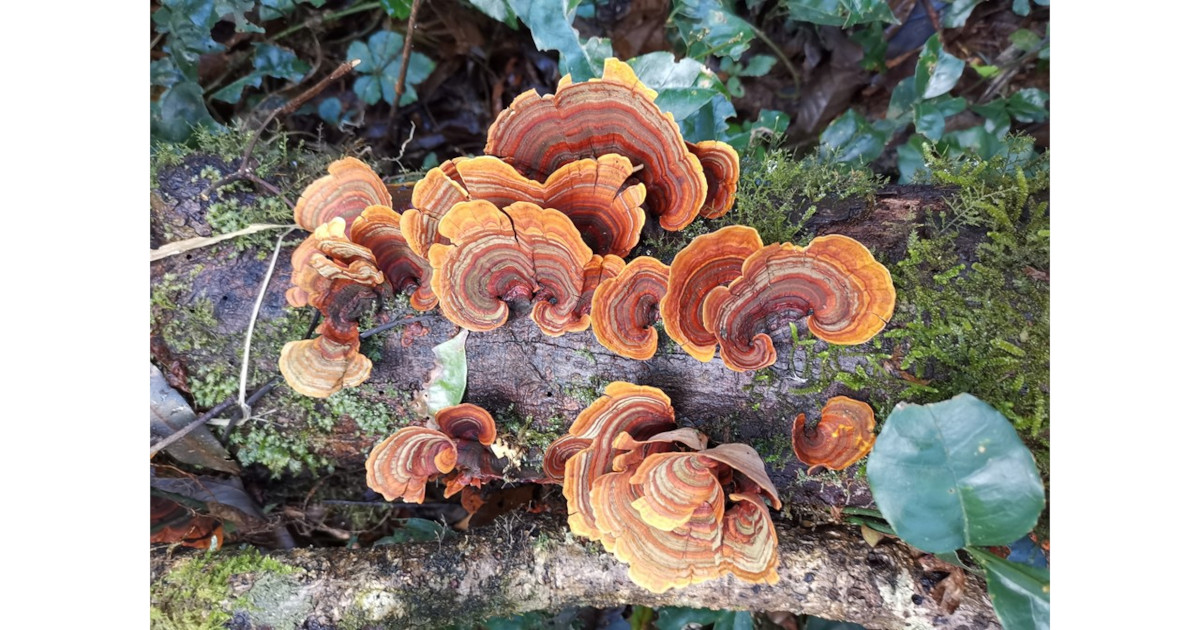Diversity and Evolution of Fungi
A special issue of Diversity (ISSN 1424-2818). This special issue belongs to the section "Phylogeny and Evolution".
Deadline for manuscript submissions: closed (15 January 2023) | Viewed by 49650

Special Issue Editors
2. College of Biodiversity Conservation, Southwest Forestry University, Kunming 650224, China
Interests: molecular systematics; taxonomy; multigene phylogeny; medical fungi; wood-decaying fungi; fungal pathogens; biodiversity
Special Issues, Collections and Topics in MDPI journals
Interests: fungal diversity; molecular systematics; taxonomy; multigene phylogeny; fungal ecology; ectomycorrhizal fungi
Special Issue Information
Dear Colleagues,
Fungi are a distinct, diverse, and ecologically important branch of the tree of life, in which these hardworking organisms play a vital role in ecosystems as diverse as soil, leaves, rocks, and pelagic zones of the ocean. Distinguished from plants by their heterotrophic nature, and distinct from animals by their external rather than internal digestion, fungi diverged from their sister kingdom the animals ∼1.3 billion years ago. The hidden and microscopic nature of many fungi also means that their diversity is undersampled, and perhaps less than 5% of the estimated two to four million species have been formally described. Fungal genomes are easy to obtain, and fungi have served as models for genome evolution and the reconstruction of phylogenetic relationships using genome-scale data, in which groundbreaking comparative genomic studies that take advantage of these features have already been published. These pioneering studies are just the prelude to the period that is upon us now.
Despite the early embrace of molecular systematics by mycologists, both the discovery and classification of fungi are still in great flux, particularly among the more basal branches of the tree, whose true diversity is only now coming to light from genomic analyses and environmental DNA surveys. This Special Issue aims to bring together a collection of papers focusing on the biodiversity, molecular systematics, and taxonomy of fungi worldwide.
Dr. Chang-Lin Zhao
Dr. Zai-Wei Ge
Guest Editors
Manuscript Submission Information
Manuscripts should be submitted online at www.mdpi.com by registering and logging in to this website. Once you are registered, click here to go to the submission form. Manuscripts can be submitted until the deadline. All submissions that pass pre-check are peer-reviewed. Accepted papers will be published continuously in the journal (as soon as accepted) and will be listed together on the special issue website. Research articles, review articles as well as short communications are invited. For planned papers, a title and short abstract (about 250 words) can be sent to the Editorial Office for assessment.
Submitted manuscripts should not have been published previously, nor be under consideration for publication elsewhere (except conference proceedings papers). All manuscripts are thoroughly refereed through a single-blind peer-review process. A guide for authors and other relevant information for submission of manuscripts is available on the Instructions for Authors page. Diversity is an international peer-reviewed open access monthly journal published by MDPI.
Please visit the Instructions for Authors page before submitting a manuscript. The Article Processing Charge (APC) for publication in this open access journal is 2100 CHF (Swiss Francs). Submitted papers should be well formatted and use good English. Authors may use MDPI's English editing service prior to publication or during author revisions.
Keywords
- biodiversity
- molecular systematics
- taxonomy
- multigene phylogeny
- medical fungi
- wood-decaying fungi
- fungal pathogens
- edible mushrooms
- poisonous mushroom
Benefits of Publishing in a Special Issue
- Ease of navigation: Grouping papers by topic helps scholars navigate broad scope journals more efficiently.
- Greater discoverability: Special Issues support the reach and impact of scientific research. Articles in Special Issues are more discoverable and cited more frequently.
- Expansion of research network: Special Issues facilitate connections among authors, fostering scientific collaborations.
- External promotion: Articles in Special Issues are often promoted through the journal's social media, increasing their visibility.
- Reprint: MDPI Books provides the opportunity to republish successful Special Issues in book format, both online and in print.
Further information on MDPI's Special Issue policies can be found here.






